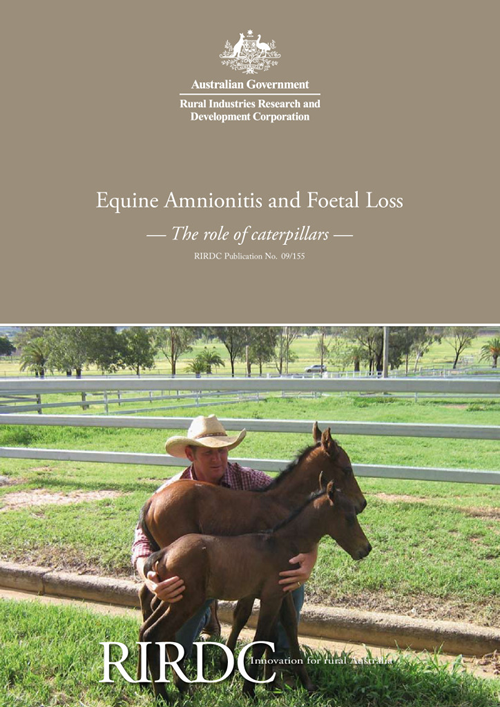Reproductive loss is a major cause of wastage in the thoroughbred breeding industry and probably accounts for a loss of about 7 – 10% of pregnancies per annum.
In 2004 a series of abortions were described in the Hunter Valley region of NSW that showed an unusual and consistent pattern of clinical and pathological signs. The condition, which came to be known as equine amnionitis and foetal loss (EAFL), had not been previously reported. The case definition of EAFL showed similarities to descriptions of abortions associated with a condition called mare reproductive loss syndrome (MRLS) reported in Kentucky, USA in 2001 and 2002.
The aim of this RIRDC project was to determine or elucidate the role of caterpillars in the pathogenesis of EAFL, specifically to determine if exposure of pregnant mares to processionary caterpillars (Ochrogaster lunifer) is associated with increased risk of abortion.





